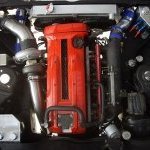It Made Me Laugh
Announcements
-
Similar Content
-
Latest Posts
-
Agreed, wooden ramps can’t go wrong. Or buy low profile ramps ie. gktech
-
I find that a single 50mm plank is sufficient to raise the car to get a low profile trolley jack under the engine cross member or rear diff. Then I use a 50mm block on the trolley lift point.
-
By RB25inside · Posted
UPDATE: Yes the GSP Axles are compatible. I installed it on my R34 today and they are working a treat! Turns out that the S13, S14, S15, and 200 SX all used the same axles as the HR34, and ER34 NA models. Which is 2 bolt x 3 pairs. -
Also build this EH ute with 370z motor and gearbox with a couple of turbos just for fun.
-
Got the passenger door on plus the master cylinder and booster. Loaded up to take it home. At home, the colour changes a lot in the light.
-






Recommended Posts